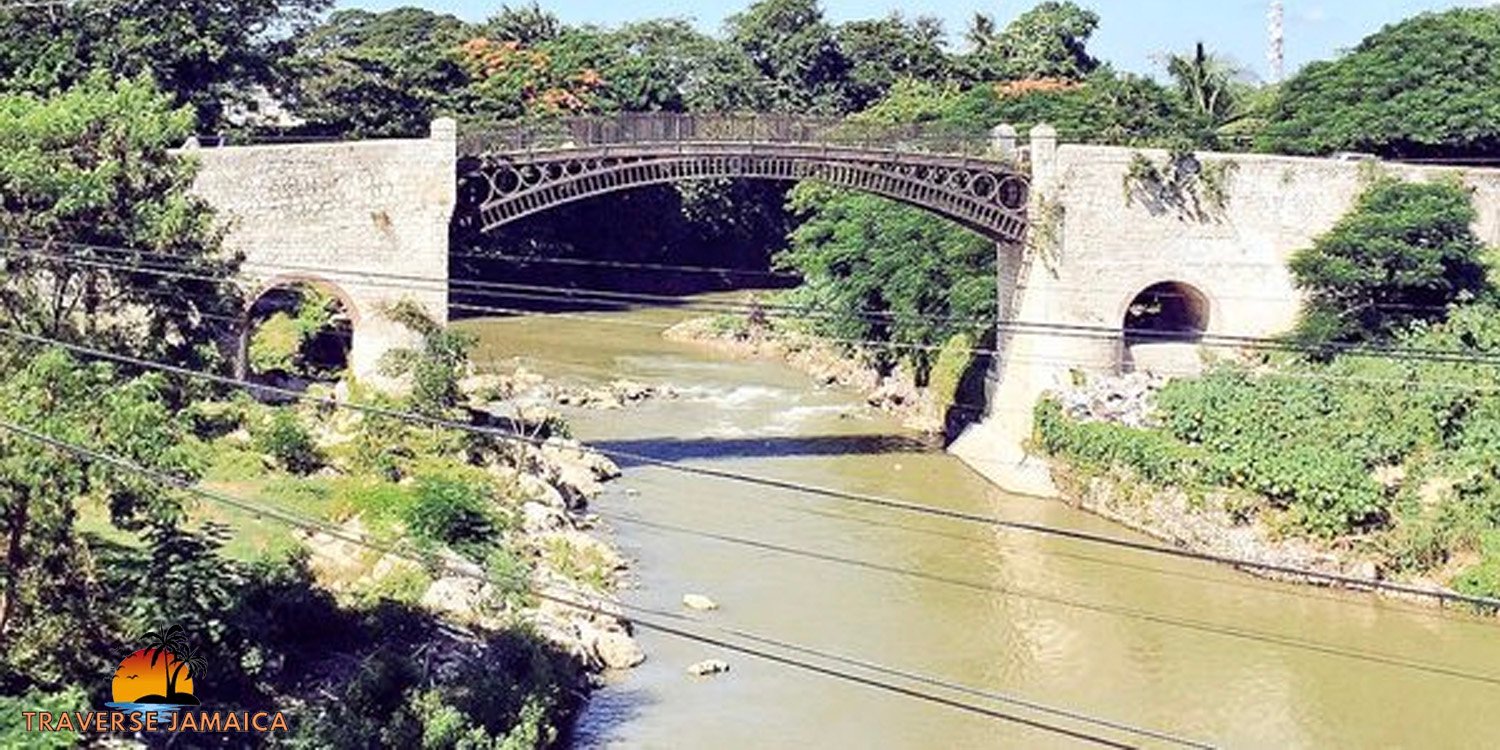Built in 1801, the Old Iron Bridge over the Rio Cobre River in Spanish Town, Jamaica, is an enduring symbol of engineering marvel and historical significance. This bridge, known to be one of the oldest iron bridges in the Western Hemisphere, offers a rare glimpse into the island’s colonial past and industrial heritage.
A Brief History
Commissioned by the Jamaican Assembly and designed by British engineers, the Old Iron Bridge was constructed at the turn of the 19th century, primarily to accommodate the growing demands of transport and trade across the Rio Cobre River. In 1801, it became a pivotal structure, connecting Spanish Town, the island’s old capital, with other significant towns and trade routes.
Crafted from cast iron, a relatively novel material for large-scale structures at the time, the bridge reflects the era’s industrial advances. Its design, believed to have been influenced by British engineering practices, embodies both strength and elegance. The bridge was manufactured in Britain, shipped to Jamaica in parts, and assembled onsite—a remarkable feat for the time, given the logistical challenges of moving such heavy materials across the Atlantic and through Jamaica’s terrain.
Architectural Significance
The Old Iron Bridge is celebrated for its enduring iron arch, spanning over 81 feet and supported by intricately designed cast-iron pillars. Unlike many bridges of the time, which were constructed from stone or wood, this bridge’s use of iron was both innovative and practical, offering greater durability and resistance to decay from the elements. The bridge’s framework is an impressive display of early 19th-century engineering, combining functional stability with aesthetic details that remain visible today.
A Legacy of Resilience
Over two centuries, the Old Iron Bridge has withstood the tests of time, weathering natural disasters, the humid tropical climate, and the steady flow of both foot and vehicular traffic. Despite some deterioration, the bridge continues to stand as a testament to both Jamaican heritage and the skill of British engineering. Restoration efforts have been undertaken in recent years to preserve its structure and legacy, allowing future generations to appreciate this landmark’s historical value.
Cultural Impact
For locals and tourists alike, the Old Iron Bridge is more than just a route across the Rio Cobre River; it’s a cultural monument. The bridge represents a chapter in Jamaican history, offering a tangible link to the past. It has become a favorite spot for photography, historical tours, and as a point of interest for students and historians studying the colonial era.
Why Visit the Old Iron Bridge?
Visitors to Spanish Town are encouraged to explore the Old Iron Bridge as part of their journey into Jamaica’s rich historical landscape. Standing on this bridge, one can almost feel the passage of time and envision the countless lives that have crossed it over the centuries. It’s a testament to resilience, a piece of heritage, and a remarkable reminder of the enduring power of thoughtful engineering.
Preserving History
Efforts continue to maintain and restore the Old Iron Bridge, as it is not only a structural landmark but also a symbol of Jamaican pride. Authorities and local organizations recognize its importance and work to ensure it remains accessible to the public, so its story can inspire future generations.









